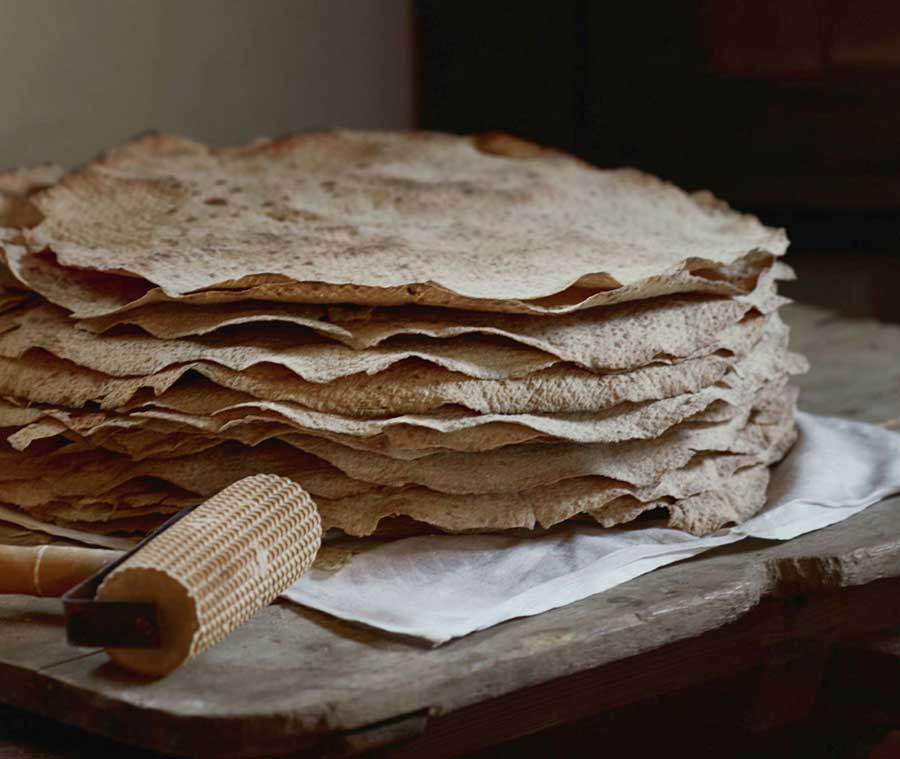
– had excellent flatbrod (flatbread) and brandy and water
(…)– 3 piles of fladbrod down and on the middle of the table (not on plates) and a round blue and white Delft-like dish of fried bacon and pigs ribs (cut in single ribs) at the top
Anne Lister Travel journal Aug 3. 1839
– had flatbread “flaadbrod” (pronounced flăbbreu) and butter and cold water declined coffee – and I ate multebær (moltebäre)
Anne Lister Travel journal Aug 4. 1839
(…)
– Flatbrood made of big and potato baked in May for the year – as thin as a wafer, perhaps 20 inches diameter and piled one cake upon another 4 or 5 feet high forming 5 or 6 rustic looking columns
Flatbrød
Flatbrød (literally “flat-bread”) is a traditional Norwegian unleavened bread which is currently usually eaten with fish, salted meats and soups. Originally it was the staple food of Norwegian farmers, shepherds and peasants. Flat bread is dry and free from water so it is possible to store it for a long period of time.
The basic ingredients of flatbrød are barley flour, salt, and water, though many varieties exist which incorporate other staples such as potatoes.
It was once generally eaten with all meals, most often with cured herring and cold boiled potato, often along with sour cream and/or butter. Another use is served with betasuppe, a traditional meat soup.
The thinner the bread is, the better it is. It is rolled and then cooked on a large griddle. The tradition of making flat bread used to be passed down through generation after generation by housewives, and each person had her own recipe for preparing it. It is still an important part of Norwegian food traditions, and is alive and well.
Simple recipe and instructions to make flat bread [flatbrød]
Ingredients
- 1.3 liters Water (ca 50°)
- 1 teaspoon Salt
- 1 kg Wheat, coarse ground (sammalt – not sifted)/(or Graham flour)
- 1 kg Wheat, finely ground (sammalt – not sifted)
- “some” Barley for the baking/rolling out of the breads
Special tools needed (or at least very helpful)
Takke (big flat griddle or skillet)
Rutekjevle (square cut, grooved rolling pin)
Bakstefløy (baking stick both flat and round would be useful)
Tine / dry container (preferably wooden or a big paper bag)
oilcloth /rolling pad
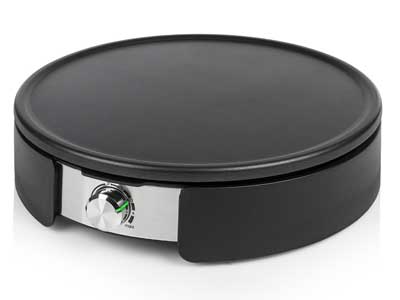
Griddle or large skillet i.e. for crêpes etc
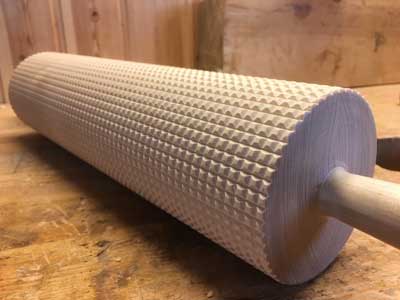
Square cut, grooved rolling pin
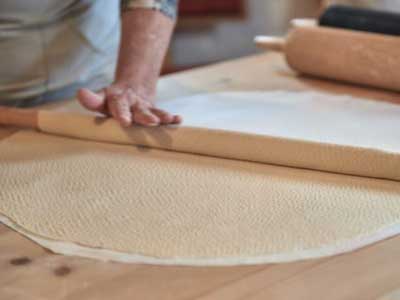
“baking sticks” – can be round or flat
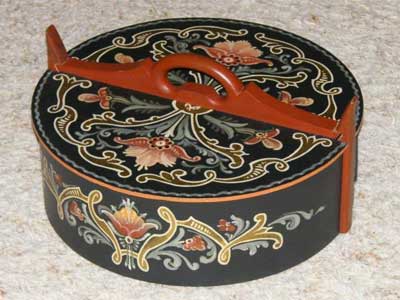
Dry container – wooden or paper bag etc
HOW-TO…
(The video further down on the page (in Norwegian) might be rather helpful)
Have the warm-lukewarm water in a mixer. Add salt and coarse ground wheat (or Graham flour) and start the mixer.
Then add the finely ground wheat little by little until you have a smooth, good dough. All flour is unique so you may need to use a little more or a little less than in the recipe.
Plop the dough out on the table and roll it into a big sausage shape. Cut into suitable pieces (ca 130 gram is perfect for a 60 cm baking skillet or flat griddle (takke) – for a smaller pan you will need to make smaller pieces.
Roll out the flat circular breads. If you have an oilcloth the rolling out will go easier. Use barley flour to help the rolling; sprinkle well with barley flour under and over the piece you’re working on. Use a smooth rolling pin to bake out the first part of the bread. When you are about halfway done rolling it out, switch to the square cut/ notched / grooved rolling pin.
The bread should be turned 2-3 times during baking to make sure it doesn’t stick to the table/surface. How thin you want the flatbread is a matter of taste, but it should be quite thin.
Roll the thin bread onto a baking stick (Bakstefløy) and onto the griddle (takke)
Flatbread is best if you don’t use too much heat. If your griddle has a thermostat that goes to 10 can set it at around 6-7. A notch that goes to 4 can set it at around 3. When you start to see some brown through the bread, you turn it; a flat baking stick will be most helpful. Brush excess flour off the flatbread while frying. Brush flour off the griddle between each baking. You can start rollin gout the next bread as the current one is baking.
Breads can be placed on top of one another as you bake, make sure they are stored in a dry environment (wooden box, big paper bag or similar conditions)
This video from Norges Bygdekvinnelag shows you how to bake based on the recipe above: